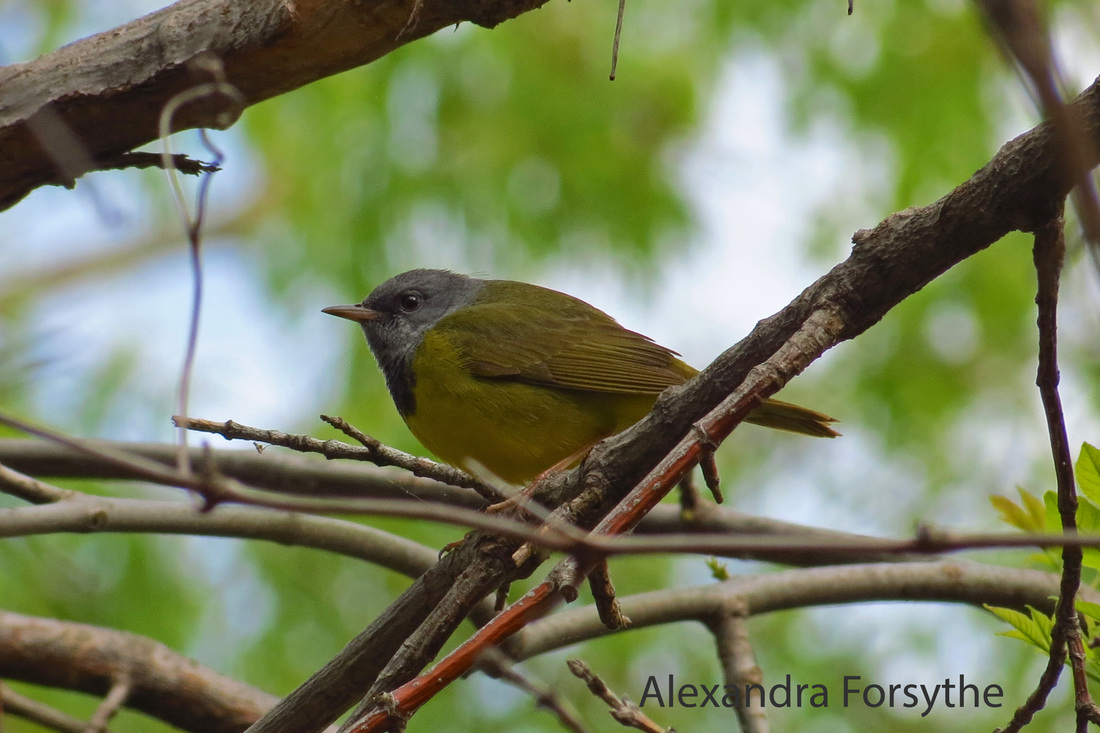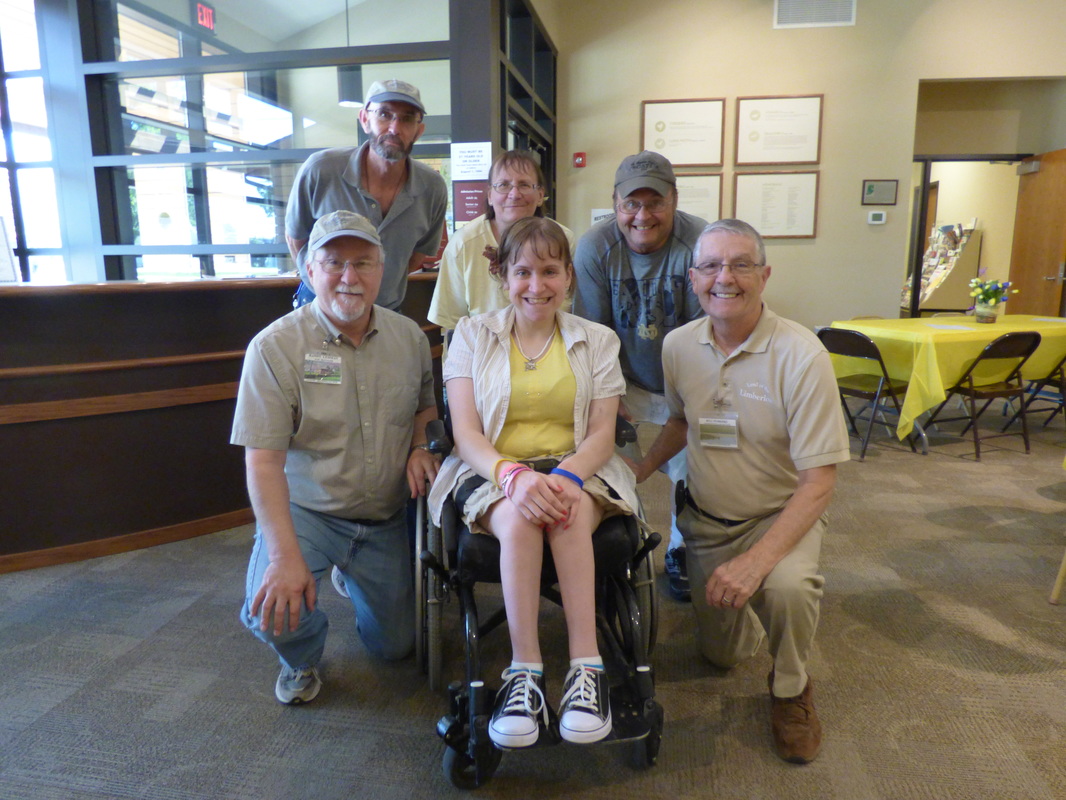Discovered in 1810 by Alexander Wilson in Philadelphia, the Mourning Warbler migrates through Indiana in the spring on its way to its breeding grounds in Canada and northern portions of the U.S., and again in the fall on its way to the wintering grounds in the tropics. According to Audubon scientists, the Mourning Warbler breeding ground is expected to move much further north over the coming decades, as illustrated by Audubon's interactive model:http://www.audubon.org/field-guide/bird/mourning-warbler. The change will likely impact the timing of their migration and their appearance in Indiana.
With their subdued coloring, preference for thickets, and solitary nature, it can be difficult to spot a Mourning Warbler. Like most warblers, they have a habit of darting from branch to branch, particularly if you are trying to take a photo! Most Indiana birders struggle to find a Mourning Warbler out in the open, so imagine, if you will, seeing a variety of different warblers, including Mourning, all in a line, holding still, ready to be photographed! Gene Stratton-Porter had that experience and she shared it with us in "Homing with the Birds":
"In a line on a wire fence, there was a string the length of a city lot, of warblers gathering for migration, while over several bushes before and close behind the fence flocked dozens upon dozens more of these trim exquisite little birds. Of course, the predominant colour was yellow, there being the pure gold of the summer yellow bird and the slightly deeper shade of the prothonotary. There were the deep orange of the Blackburnian and the mottled yellow of the magnolian. There appeared prominently on the wire the yellow head and throat of the blue-wing, the stronger touch of yellow of the redstart, the black-throated green warbler, the yellow pine and the yellow-touched hood and mourning warblers. There were a number of specimens of the black-throated blue warbler and the still paler cerulean. There was at least one specimen of the bay-breasted warbler, with robin-breast colour on the top of its head and all over its underparts, and there were enough chattering, little warblers I could not identify to have made a large flock...As a rare and unusual sight I can think of no experience in field work to surpass the beauty of this picture."


 RSS Feed
RSS Feed
